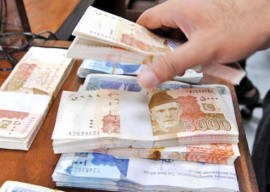
Senior officials of the Balochistan government have revealed that they have no ownership record of nearly 90% of land in the country’s largest but most impoverished province, while a project to computerise land records is awaiting sanction of its budget.
Revenue Department Secretary Javed Raheem told The Express Tribune that while the province accounts for nearly 43% of Pakistan’s land mass, no survey has been carried out for most of province’s lands since partition, hence their library of ownership records is grossly thin.
The lack of records means mafias and manual land record keepers, the patwaris, have had free reign to grab and even sell a piece of land many times over.
“There are hundreds of instances where one piece of land was sold to more than one person. It all happened due to the absence of records,” Raheem lamented. He added that the situation was so bad that some districts like Pishin, Panjgur and parts of Awaran had no official records of land ownership.

Pakistan has traditionally relied on rudimentary manual land record keepers, patwaris. But two schools to train these patwaris, in Mastung and Pishin, closed down over a decade ago, resulting in a dearth of these record keepers.
After a suo motu by the Supreme Court directing authorities to computerise records, the three other provinces, Sindh, Punjab and Khyber-Pakhtunkhwa, have already moved to computerise their land records. Balochistan, however, had only in January 2015 formed a committee to establish a Geographic Information System (GIS) to create a searchable computer database for land ownership in the province.
“A committee was formed in January 2015 which comprises IT officers, secretary board of revenue and others,” said the Revenue Department’s IT expert and head of the Balochistan GIS system, Ashfaque Baloch.
Explaining the GIS system, Baloch said that within three years they could create a system that would allow officials procure complete ownership records of a particular piece of land within two minutes, and complete a land transfer within 15 minutes. Further, the system will allow them to replace the archaic patwari structures.
“It will be a system similar to the one employed by NADRA,” Baloch told The Express Tribune. “We will be able to determine how many schools and health centres are present in a district.”
In the first phase, Baloch said they would take geographical maps from Google and then, with assistance from patwaris and commissioner of each district, they would create a vetted land ownership database. “More than 90% of the areas of Balochistan are not demarked,” Baloch said.
This verified, existing and new, data will then be entered into the system by trained technical staff at the Civil Secretariat in Quetta, under the supervision of the provincial chief secretary. Once ready, people will be able to access the system at 12 district offices, and through mobile vans in those areas where district offices are not present.
Asked why they had not started work nearly 10 months after the committee was formed, Baloch said while Rs5.79 billion had been set aside for the project, the government has yet to release the funds.
Published in The Express Tribune, September 28th, 2015.
1731570357-0/elon-musk-(1)1731570357-0-405x300.webp)
-(1)1717678110-0/Kendrick-(1)-(1)1717678110-0-165x106.webp)















COMMENTS
Comments are moderated and generally will be posted if they are on-topic and not abusive.
For more information, please see our Comments FAQ